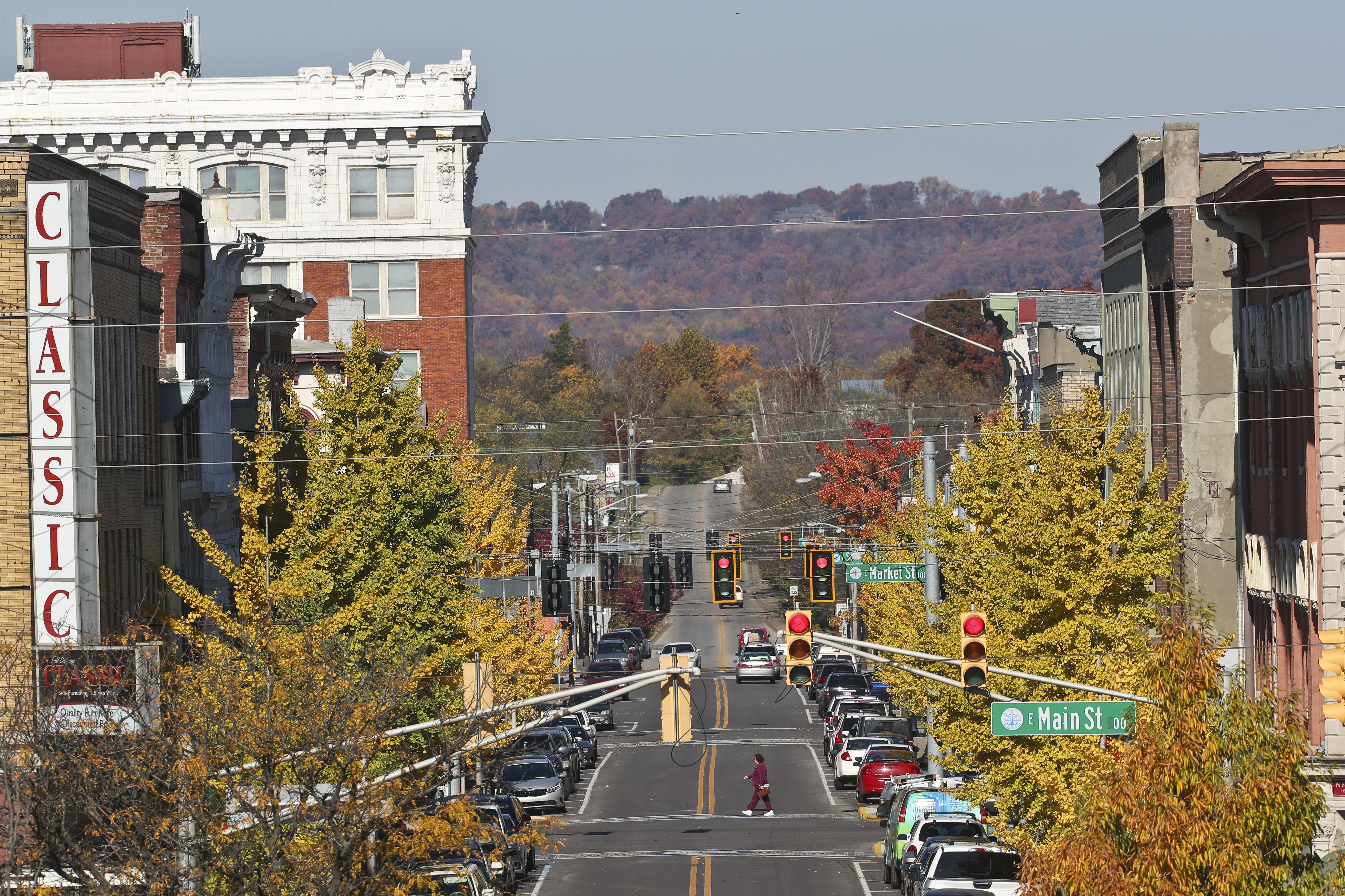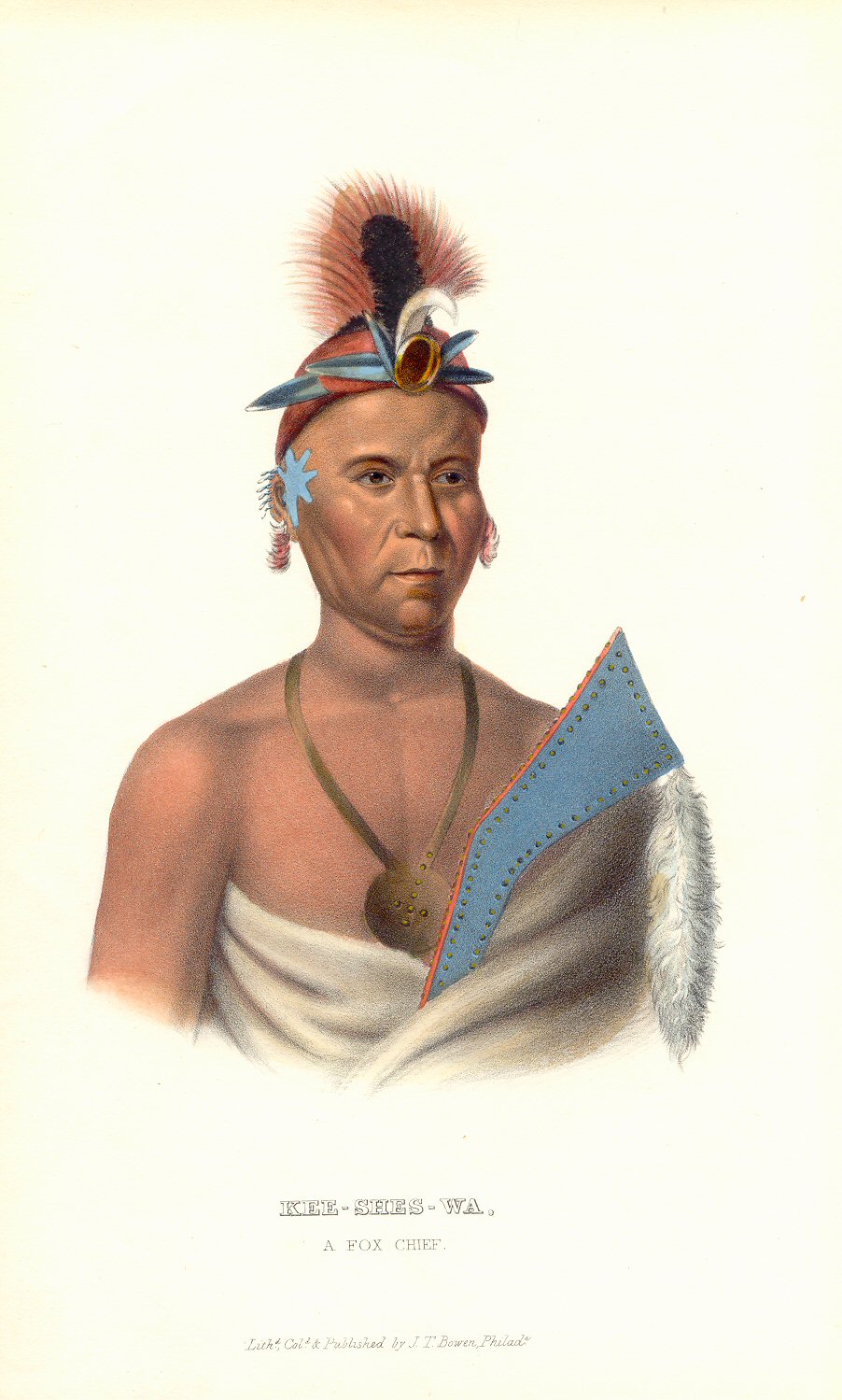|
Mary Cecilia Bailly
Mother Mary Cecilia Bailly, S.P., (June 2, 1815 – August 2, 1898) was the Superior General of the Sisters of Providence of Saint Mary-of-the-Woods, Indiana from 1856–1868, directly succeeding the congregation's foundress Saint Mother Theodore Guerin. During her time in office, she began rebuilding the Academy (now Saint Mary-of-the-Woods College) and sent Sisters of Providence to staff military hospitals in Indianapolis and Vincennes, Indiana during the American Civil War. She was born Eleanor Cecilia Kinzie Bailly in Mackinac County, Michigan, on June 2, 1815. Her father was Joseph Aubert de Gaspé Bailly de Messein, a Canadian fur magnate of French descent, and her mother was Marie Le Fèvre de la Vigne (Tou-se-qua), a member of the Ottawa tribe. When Eleanor was seven, the family moved to the Joseph Bailly Homestead, Porter County, Indiana. This homestead was much traveled by various Native American tribes, including the Menominee, Winnebago, Fox and Dakota Sioux. A ... [...More Info...] [...Related Items...] OR: [Wikipedia] [Google] [Baidu] |
Catholic Church
The Catholic Church, also known as the Roman Catholic Church, is the largest Christian church, with 1.3 billion baptized Catholics worldwide . It is among the world's oldest and largest international institutions, and has played a prominent role in the history and development of Western civilization.O'Collins, p. v (preface). The church consists of 24 ''sui iuris'' churches, including the Latin Church and 23 Eastern Catholic Churches, which comprise almost 3,500 dioceses and eparchies located around the world. The pope, who is the bishop of Rome, is the chief pastor of the church. The bishopric of Rome, known as the Holy See, is the central governing authority of the church. The administrative body of the Holy See, the Roman Curia, has its principal offices in Vatican City, a small enclave of the Italian city of Rome, of which the pope is head of state. The core beliefs of Catholicism are found in the Nicene Creed. The Catholic Church teaches that it is the on ... [...More Info...] [...Related Items...] OR: [Wikipedia] [Google] [Baidu] |
Joseph Bailly Homestead
The Joseph Bailly Homestead, also known as Joseph Bailly Homestead and Cemetery, in Porter, Indiana, is a U.S. National Historic Landmark. The Bailly Homestead is preserved by the National Park Service in Indiana Dunes National Park in Porter, Indiana. The Homestead was the home of Joseph Aubert de Gaspé Bailly de Messein (1774-1835), one of the first permanent white settlers in Northwest Indiana. This homestead, begun in 1834, is one of the only surviving elements of the once-significant fur trade in the region. and It received its landmark designation in 1962. Bailly brought his family to the southern shore of Lake Michigan in 1822, first living in a log house built soon afterward. The Homestead remained in the family until the death of his granddaughter, Frances Howe, in 1917. The Homestead is sometimes referred to as the "Bailly-Howe" Home. The National Park Service acquired the Homestead on November 26, 1971. Ownership Joseph Bailly acquired the Homestead and surr ... [...More Info...] [...Related Items...] OR: [Wikipedia] [Google] [Baidu] |
Fort Wayne, Indiana
Fort Wayne is a city in and the county seat of Allen County, Indiana, United States. Located in northeastern Indiana, the city is west of the Ohio border and south of the Michigan border. The city's population was 263,886 as of the 2020 Census, making it the List of cities in Indiana, second-most populous city in Indiana after Indianapolis, and the 76th-most populous city in the United States. It is the principal city of the Fort Wayne metropolitan area, consisting of Allen and Whitley County, Indiana, Whitley counties which had an estimated population of 423,038 as of 2021. Fort Wayne is the cultural and economic center of northeastern Indiana. In addition to the two core counties, the combined statistical area (CSA) includes Adams County, Indiana, Adams, DeKalb County, Indiana, DeKalb, Huntington County, Indiana, Huntington, Noble County, Indiana, Noble, Steuben County, Indiana, Steuben, and Wells County, Indiana, Wells counties, with an estimated population of 649,105 in 202 ... [...More Info...] [...Related Items...] OR: [Wikipedia] [Google] [Baidu] |
Cannelton, Indiana
Cannelton is a city in Troy Township, Perry County, in the U.S. state of Indiana, along the Ohio River. The population was 1,563 at the 2010 census. Cannelton, which was the smallest incorporated city in the state until 2010, was formerly the county seat of Perry County until the seat was relocated to Tell City. History The name Cannelton was adopted in 1844, and is derived from the cannel coal that was once mined in the area. A post office has been in operation at Cannelton since 1844. The Cannelton Cotton Mill, Cannelton Historic District, and St. Luke's Episcopal Church are listed on the National Register of Historic Places. Geography Cannelton is located at (37.910134, -86.739931). According to the 2010 census, Cannelton has a total area of , of which (or 93.55%) is land and (or 6.45%) is water. Climate The climate in this area is characterized by hot, humid summers and generally mild to cool winters. According to the Köppen Climate Classification system, Cannelton ... [...More Info...] [...Related Items...] OR: [Wikipedia] [Google] [Baidu] |
New Albany, Indiana
New Albany is a city in Floyd County, Indiana, United States, situated along the Ohio River, opposite Louisville, Kentucky. The population was 37,841 as of the 2020 census. The city is the county seat of Floyd County. It is bounded by I-265 to the north and the Ohio River to the south, and is considered part of the Louisville, Kentucky Metropolitan Statistical Area. The mayor of New Albany is Jeff Gahan, a Democrat; he was re-elected in 2019. History Early history The land of New Albany was officially granted to the United States after the American Revolutionary War. The territory had been captured by George Rogers Clark in 1779. For his services Clark was awarded large tracts of land in Southern Indiana including most of Floyd County. After the war Clark sold and distributed some of his land to his fellow soldiers. The area of New Albany ended up in the possession of Col. John Paul. New Albany was founded in July 1813 when three brothers from New York —Joel, Abner, and ... [...More Info...] [...Related Items...] OR: [Wikipedia] [Google] [Baidu] |
Washington, Indiana
Washington is a city in Daviess County, Indiana. The population was 11,509 at the time of the 2010 census. The city is the county seat of Daviess County. It is also the principal city of the Washington, Indiana Micropolitan Statistical Area, which comprises all of Daviess County and had an estimated 2017 population of 31,648. History Washington was platted in 1815. It was named from Washington Township. The railroad was built through Washington in 1857. By 1889, it was a major depot and repair yard for the Ohio and Mississippi Railroad. The Baltimore and Ohio Railroad took over the line in 1893. During this time, the railroad employed over 1,000 workers. On November 17, 2013, an EF2 tornado tore through the western edge of the city destroying 20 homes and severely damaging 20 others. The Magnus J. Carnahan House, Daviess County Courthouse, Thomas Faith House, Robert C. Graham House, Dr. John A. Scudder House, Washington Commercial Historic District, and Dr. Nelson Wils ... [...More Info...] [...Related Items...] OR: [Wikipedia] [Google] [Baidu] |
Maria Amalia Of The Two Sicilies
french: link=no, Marie-Amélie Thérèse de Bourbon-Siciles , house = Bourbon-Two Sicilies , father = Ferdinand I of the Two Sicilies , mother = Maria Carolina of Austria , birth_date = , birth_place = Caserta Palace, Naples , death_date = , death_place = Claremont House, Surrey, England , burial_place = Royal Chapel, Dreux, France , religion = Roman Catholicism , signature = Signature of Queen Marie Amélie.jpg Maria Amalia Teresa of Naples and Sicily (26 April 1782 – 24 March 1866) was Queen of the French by marriage to Louis Philippe I, King of the French. She was the last queen of France. Among her grandchildren were the monarchs Leopold II of Belgium, Empress Carlota of Mexico, with whom Maria Amalia regularly corresponded while she was in Mexico, Ferdinand I of Bulgaria, and Queen Mercedes of Spain . Early years Maria Amalia was born on 26 April 1782 at the Caserta Palace just outside Naples. She was the tenth of eighteen children ... [...More Info...] [...Related Items...] OR: [Wikipedia] [Google] [Baidu] |
Religious Sister
A religious sister (abbreviated ''Sr.'' or Sist.) in the Catholic Church is a woman who has taken public vows in a religious institute dedicated to apostolic works, as distinguished from a nun who lives a cloistered monastic life dedicated to prayer. Both nuns and sisters use the term "sister" as a form of address. The ''HarperCollins Encyclopedia of Catholicism'' (1995) defines as "congregations of sisters institutes of women who profess the simple vows of poverty, chastity, and obedience, live a common life, and are engaged in ministering to the needs of society." As William Saunders writes: "When bound by simple vows, a woman is a sister, not a nun, and thereby called 'sister'. Nuns recite the Liturgy of the Hours or Divine Office in common ... ndlive a contemplative, cloistered life in a monastery ... behind the 'papal enclosure'. Nuns are permitted to leave the cloister only under special circumstances and with the proper permission." History Until the 16th century, relig ... [...More Info...] [...Related Items...] OR: [Wikipedia] [Google] [Baidu] |
Ruillé-sur-Loir
Ruillé-sur-Loir (, literally ''Ruillé on Loir'') is a former commune in the Sarthe department in the Pays de la Loire region in north-western France. On 1 January 2017, it was merged into the new commune Loir en Vallée. 16 December 2016 The village has a medieval and Renaissance parish church but is dominated by the school and the mother house of the order of Sisters of Providence (which enjoys links with England, the Netherlands and Madagascar). The tall spire of the conventual church is visible at a distance. See also *Communes of the Sarthe department
The following is a list of th ...
[...More Info...] [...Related Items...] OR: [Wikipedia] [Google] [Baidu] |
Religious Sister
A religious sister (abbreviated ''Sr.'' or Sist.) in the Catholic Church is a woman who has taken public vows in a religious institute dedicated to apostolic works, as distinguished from a nun who lives a cloistered monastic life dedicated to prayer. Both nuns and sisters use the term "sister" as a form of address. The ''HarperCollins Encyclopedia of Catholicism'' (1995) defines as "congregations of sisters institutes of women who profess the simple vows of poverty, chastity, and obedience, live a common life, and are engaged in ministering to the needs of society." As William Saunders writes: "When bound by simple vows, a woman is a sister, not a nun, and thereby called 'sister'. Nuns recite the Liturgy of the Hours or Divine Office in common ... ndlive a contemplative, cloistered life in a monastery ... behind the 'papal enclosure'. Nuns are permitted to leave the cloister only under special circumstances and with the proper permission." History Until the 16th century, relig ... [...More Info...] [...Related Items...] OR: [Wikipedia] [Google] [Baidu] |
Dakota Sioux
The Dakota (pronounced , Dakota language: ''Dakȟóta/Dakhóta'') are a Native American tribe and First Nations band government in North America. They compose two of the three main subcultures of the Sioux people, and are typically divided into the Eastern Dakota and the Western Dakota. The four bands of Eastern Dakota are the Bdewákaŋthuŋwaŋ, Waȟpéthuŋwaŋ, Waȟpékhute, and Sisíthuŋwaŋ and are sometimes referred to as the Santee (''Isáŋyathi'' or ''Isáŋ-athi''; "knife" + "encampment", "dwells at the place of knife flint"), who reside in the eastern Dakotas, central Minnesota and northern Iowa. They have federally recognized tribes established in several places. The Western Dakota are the Yankton, and the Yanktonai (''Iháŋktȟuŋwaŋ'' and ''Iháŋktȟuŋwaŋna''; "Village-at-the-end" and "Little village-at-the-end"), who reside in the Upper Missouri River area. The Yankton-Yanktonai are collectively also referred to by the endonym ''Wičhíyena'' ("Those Who ... [...More Info...] [...Related Items...] OR: [Wikipedia] [Google] [Baidu] |
Fox (people)
The Meskwaki (sometimes spelled Mesquaki), also known by the European exonyms Fox Indians or the Fox, are a Native American people. They have been closely linked to the Sauk people of the same language family. In the Meskwaki language, the Meskwaki call themselves ', which means "the Red-Earths", related to their creation story. Historically their homelands were in the Great Lakes region. The tribe coalesced in the St. Lawrence River Valley in present-day Ontario, Canada. Under French colonial pressures, it migrated to the southern side of the Great Lakes to territory that much later was organized by European Americans as the states of Michigan, Wisconsin, Illinois, and Iowa. The Meskwaki suffered damaging wars with the French and their Native American allies in the early 18th century, with one in 1730 decimating the tribe. Euro-American colonization and settlement proceeded in the United States during the 19th century and forced the Meskwaki/Fox south and west into the ta ... [...More Info...] [...Related Items...] OR: [Wikipedia] [Google] [Baidu] |
.jpg)







